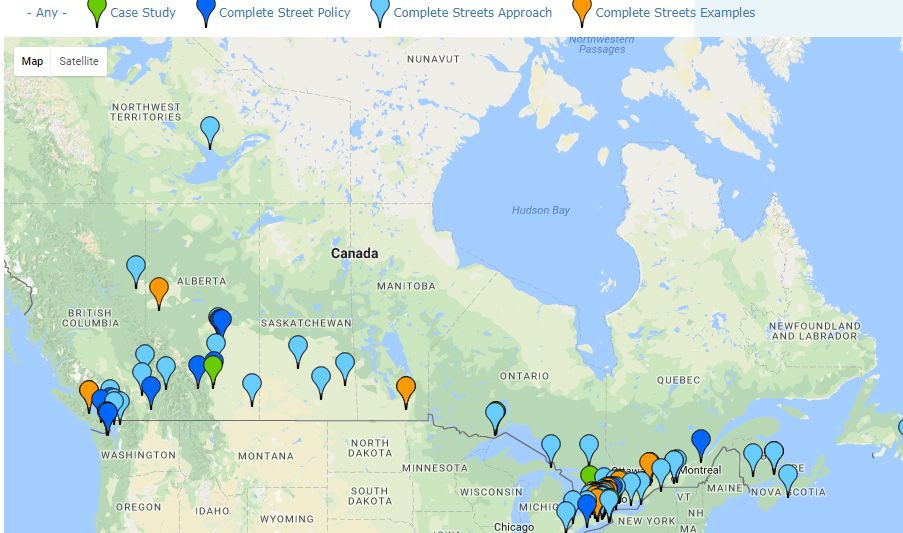
How can we actually achieve Vision Zero? As Toronto City Council voted again to accelerate its Vision Zero Road Safety Plan, and road deaths in the city show no signs of decline, this question is coming from all sides.
Vision Zero
Vision Zero, a concept developed in Sweden twenty years ago, has at its foundation a simple, but bold goal: get to zero serious injuries and deaths on the road. The goal of zero is based on the belief that road deaths and injuries are not accidents. They are predictable, given the current design of our streets and the fact that humans make mistakes. They are also preventable, in that if we designed our streets differently, the possibility for a mistake to have serious, deadly consequences could be eliminated (check out the Vision Zero Initiative from the Swedish government for more on this).
The Vision Zero approach has proven to be an effective one. Sweden has one of the lowest rates of traffic fatalities in the world, and it continues to fall, despite increasing volumes of traffic volumes. Fatalities involving pedestrians have decreased by almost 50% in the last five years. The approach is now being adopted by cities across North America. To date, 33 US cities have adopted Vision Zero, and a recent scan found 12 jurisdictions in Canada who have or are developing Vision Zero policies, including Edmonton, Vancouver, Ottawa, Toronto, London, Montreal, Manitoba and British Columbia.
Complete Streets
Complete Streets is a made-in-America approach that has existed for nearly as long as Vision Zero. It was created by a broad coalition representing planners, architects, healthcare professionals, transportation engineers, public transit, and bicycling and walking advocates who, in 2003, were looking to shift transportation planning practices away from a focus on motor vehicles and efficiency, and towards safety and accessibility. Under Complete Streets, the right-of-way is routinely designed to enable safe access for all road users, regardless of age, ability or mode of transportation. Space for pedestrians, bicycles, transit users and people with disabilities are not an afterthought, but an integral planning feature. Particular care is given to protecting vulnerable road users and considering transportation inequities.
Since its inception, over 1,200 Complete Street policies have been passed in the US, and TCAT’s Complete Streets for Canada website has tracked over 100 policies here at home (know of a policy that’s not on our map? Email us and tell us about it!) Examples of streets that have been re-designed to be complete are becoming more and more commonplace.
Getting to Vision Zero with Complete Streets
Interestingly, 73% of the US cities that have adopted Vision Zero also have a Complete Streets policy in place, and a further 24% are located in states with Complete Street policies. In Canada, 67% of jurisdictions who have adopted or are considering Vision Zero also have Complete Street policies. This overlap begs the question, how can these two approaches work together? As Vision Zero expands its reach across Canada and the US, how can it take advantage of the Complete Street policy frameworks that are often already in place? And do we need both?
Complete Streets and Vision Zero share a common focus on road safety. They are both responses to unacceptable traffic deaths and long-standing traditions of ignoring the needs of vulnerable road users. They also share a concern for transportation and health equity, with a recognition that dangerous designs and road deaths are not evenly distributed across the population. One of the strengths of both approaches is that they bring together actors from across different sectors to work on road safety issues collaboratively.
Vision Zero has been particularly effective in galvanizing public and political support around a clear and compelling goal. It demands urgent action and holds politicians accountable through a single measure: number of serious injuries or deaths. In terms of strategies, it opens the umbrella wide, making use of technology, enforcement, speed reduction, education and engineering solutions, although safe street design is central.
Complete Streets can fit within the engineering stream of a Vision Zero plan. It changes deeply embedded processes and priorities to ensure that streets across the entire system are designed to be safe as a matter of course, as well as in identified problem areas.
At the same time, Complete Streets also goes beyond Vision Zero. While safety is paramount, Complete Street projects also serve complementary goals, such as improving transit service and mobility, increasing urban environmental sustainability, place-making and improving health. Context is key, and Complete Streets looks carefully at how the built environment and the public realm interact to create vibrant streets that are safe for everyone.
A city with both a Complete Streets policy and a Vision Zero plan is well-positioned to dramatically shift its transportation planning approach away from motor vehicle efficiency and towards safety, accessibility and place-making. A combined strategy can aggressively address unsafe road conditions, while also creating streets that are compelling places that support people making sustainable transportation choices. It’s an uphill battle, though, with years of entrenched practices and assumptions to overcome. Planners, advocates and city-builders will need every tool at their disposal, but success stories from both sides of the ocean show us that profound change is possible.
